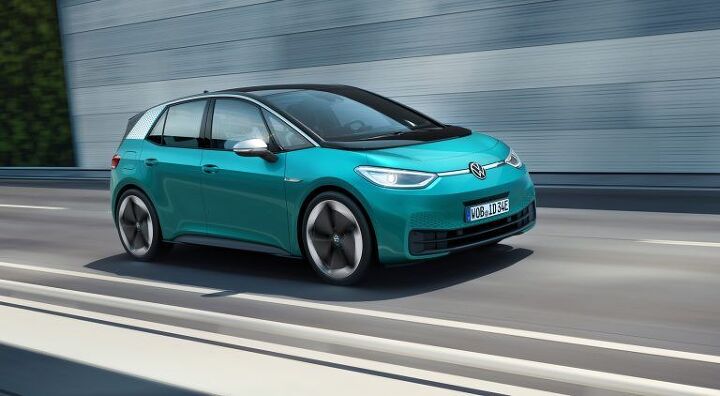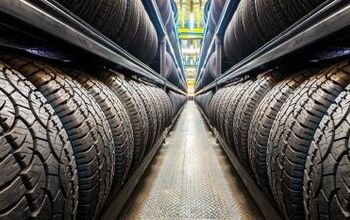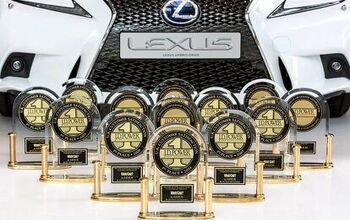QOTD: Do You Care for Over-the-air?

Connectivity is one of those special buzzwords used across most industries, whether it be for a virtual meeting app, a washing machine, or a car. All companies seem to think we need more of it. Today we want to know — are you a fan of cars that come equipped with over-the-air update connectivity?
It seems a lot of people are in favor of ever-increasing connectivity, and require it even in the most mundane of appliances. I realized this while shopping for a water heater about three years ago. Reading the reviews, I expected most details to be about the quality of the water heater and if it was an efficient user of electrons. Instead, several users marked off a star or two because it didn’t feature Wi-fi connectivity. I’d never considered before how a water heater might need such connectivity, so I bought the model without it.
Since then I’ve been utterly devastated on multiple occasions when I couldn’t check the status of my water heater from bed, or at work. Or not…
This question was prompted by news reported yesterday about the new Ford Mustang Mach-E and its over-the-air updates. Manufacturers claim the advantages of such connectivity are great: Updates and improvements can be made to your car without your intervention (or knowledge). Patches in the software can fix problems before you encounter them, saving you stress and anxiety about the weak points of your car. And additional features of later software versions can be added to your older vehicle, bringing it up to par with the latest new product at dealer lots. It’s a win-win!
The downside here is the potential to charge you up front for tech which never arrives (ahem, Tesla), or to remove software the initial customer paid for when the car is resold to an unsuspecting second party (again, Tesla). A third concern is arising presently in the case of Volkswagen and the not-ready-will-ship ID.3. Because updates are downloadable and limitless, manufacturers will launch their product as an unfinished beta test, asking consumers to pony up full asking price for a car with incomplete software and features.
This consumers-as-testers methodology has occurred in the video game industry already, usually called “early access.” In many examples (which have escalated in frequency over the past five years or so), a developer put their game out in early access before it was finished. The promise is always that the final game will be completed soon, and released at no additional charge to the early access buyers. Sometimes the game is improved, finalized, and released. But other times it becomes abandonware, after the newly funded developer makes a nice return on their investment and moves on.
I can see this happening more and more in cars equipped with over-the-air in the future. When updates are unlimited and relatively low-cost, there’s less incentive to get the product right before consumers go and buy it. Just fix it later, no big deal.
What do you think about over-the-air connectivity? Is it a great way for product to be continually supported and improved by manufacturers? Or is it mostly a way to rush product to market and exercise greater control over access to features?
[Image: VW]

Interested in lots of cars and their various historical contexts. Started writing articles for TTAC in late 2016, when my first posts were QOTDs. From there I started a few new series like Rare Rides, Buy/Drive/Burn, Abandoned History, and most recently Rare Rides Icons. Operating from a home base in Cincinnati, Ohio, a relative auto journalist dead zone. Many of my articles are prompted by something I'll see on social media that sparks my interest and causes me to research. Finding articles and information from the early days of the internet and beyond that covers the little details lost to time: trim packages, color and wheel choices, interior fabrics. Beyond those, I'm fascinated by automotive industry experiments, both failures and successes. Lately I've taken an interest in AI, and generating "what if" type images for car models long dead. Reincarnating a modern Toyota Paseo, Lincoln Mark IX, or Isuzu Trooper through a text prompt is fun. Fun to post them on Twitter too, and watch people overreact. To that end, the social media I use most is Twitter, @CoreyLewis86. I also contribute pieces for Forbes Wheels and Forbes Home.
More by Corey Lewis
Latest Car Reviews
Read moreLatest Product Reviews
Read moreRecent Comments
- Jeff Good review but the XLT although not a luxury interior is still a nice place to be. The seats are comfortable and there is plenty of headroom. The main downside is the limited availability resulting in dealer markups above MSRP. I have a 2022 hybrid Maverick XLT for over 2 years and it has more than met my expectations. I believe for many who do not need a truck most of the time but want one the Maverick will meet their needs.
- Kwik_Shift_Pro4X I use a now discontinued Kuhmo AT tire that is surprisingly good in the snow, even in 2WD. However since most of my driving is on road, I'm going to look for a more highway friendly tire for smoother quiet. I'm sure it can still handle the forest roads leading to my fishing spots.
- MaintenanceCosts So this is really just a restyled VW Fox. Craptacular tin can but fun to drive in a "makes ordinary traffic seem like a NASCAR race" kind of way.
- THX1136 While reading the article a thought crossed my mind. Does Mexico have a fairly good charging infrastructure in place? Knowing that it is a bit poorer economy than the US relatively speaking, that thought along with who's buying came to mind.
- Lou_BC Maybe if I ever buy a new car or CUV

































Comments
Join the conversation
My personal preference is to consider that I have purchased a vehicle from a manufacturer through a dealer and it is mine. This preference hasn't changed since my first new vehicle purchase in '72 (a VW Type 2). I make the assumption (sometimes faulty but not very) that the vehicle is what it was advertised to be at time of sale and needed nothing extra from the manufacturer (or, shudder, the dealer) for it to operate successfully during my ownership. If the manufacturer wants my input concerning my ownership (likes, dislikes, recommendations) they can send me a form to fill out - they do not need to "communicate" with my vehicle behind the scene in any way. If there is a serious need to upgrade/update my vehicle for some reason, I can be reached by mail/email to allow me to decide on my own the path to take - this worked for all my many vehicles purchased since that '72 Type 2. I have attempted to electronically "harden" my F350 with everything short of a Faraday cage to keep the manufacturer dumb about my vehicle - someday I'll figure out how FordConnect sees my vehicle and remove that comm link also. It's my vehicle, purchased by me and for me and really none of the manufacturers business after the sale. Yeah, I'm the guy that tells the dealers at delivery to remove the license plate frames with the dealership logo and the dealership stickers when they refuse to pay me my $150 monthly fee for free advertising on MY new vehicle.
Just think, as emission requirements get tighter, your car will no longer need to be grandfathered in. The manufacturer can neuter your car from a distance to get it into compliance. Suddenly, flooring the gas pedal only gets you 80% of the throttle it used to. Less fuel going into the cylinders. And in case you didn't get a car with tattletale software, companies like Ford can now make sure that the insurance companies can better keep tabs on you doing 37 in a 35. But it's all for your own good, that's for sure!